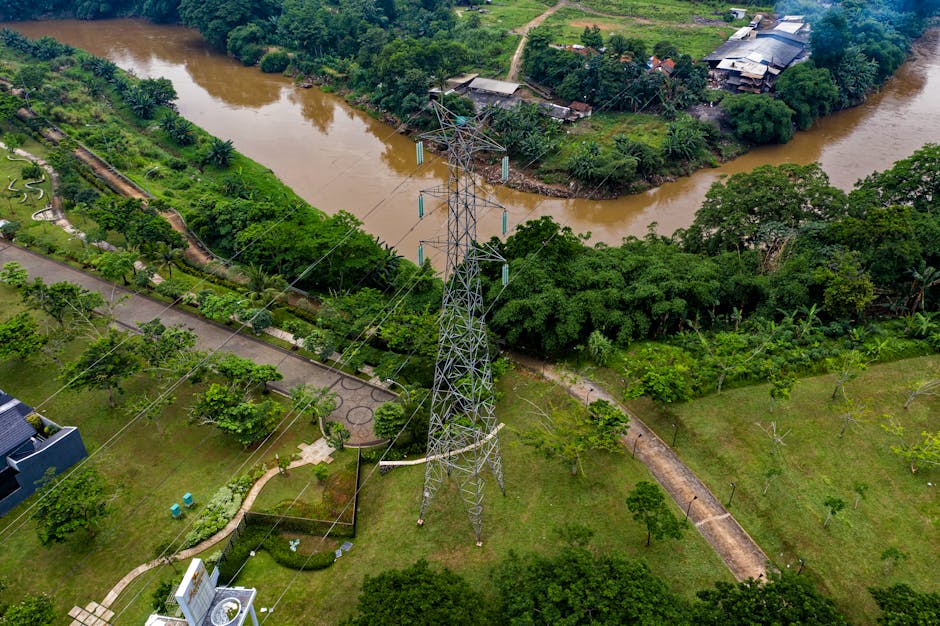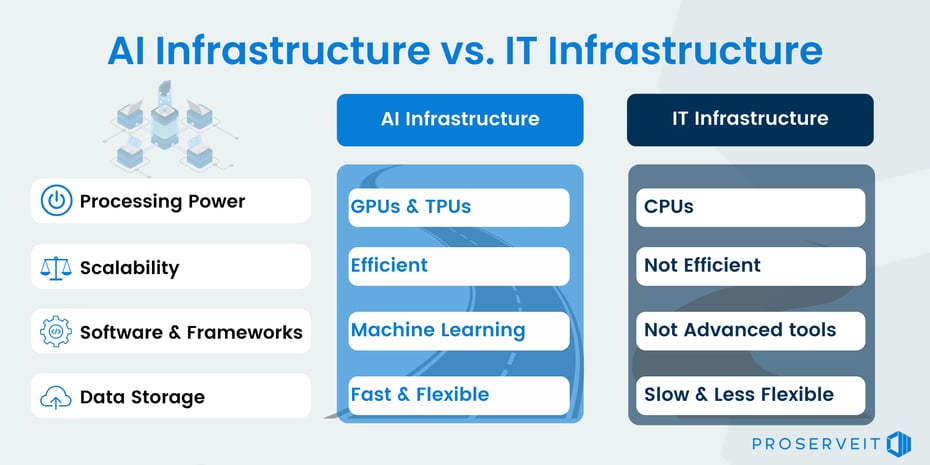
Meta’s AI Infrastructure Gambit: Powering the Next Generation of LLMs at Unprecedented Scale
The Insatiable Demand for AI Compute: Why Meta is Building a New Generation of Data Centers
The artificial intelligence landscape is in the midst of a computational arms race. The exponential growth in the size and capability of foundation models, particularly Large Language Models (LLMs), has created an insatiable demand for processing power. In this high-stakes environment, access to massive, specialized computing infrastructure is no longer just an advantage; it’s a prerequisite for innovation. Recent developments, including major investments in new, AI-focused data centers, signal a pivotal moment in this race. This strategic push, highlighted by the latest Meta AI News, underscores a fundamental truth: the future of AI will be built on a foundation of silicon, power, and sophisticated software orchestration.
Companies at the forefront, from OpenAI and Google DeepMind to Anthropic and Mistral AI, are all vying for GPU capacity. This hardware, predominantly from NVIDIA, is the engine that drives the training and inference of these complex neural networks. Meta’s commitment to building its own large-scale, dedicated AI infrastructure is a strategic move to secure its computational future. This allows them to not only train successor models to their popular Llama series but also to control the entire stack, from the physical layer to the software frameworks like PyTorch. This article explores the technical underpinnings of such a massive undertaking, from the distributed training frameworks required to tame thousands of GPUs to the optimization techniques needed to serve models efficiently to billions of users.
Section 1: The Core of AI Supercomputing: Distributed Training Fundamentals
At the heart of any large-scale AI data center is a cluster of thousands of interconnected accelerators (GPUs or custom ASICs). Training a model with hundreds of billions or even trillions of parameters on a single GPU is impossible. The solution is distributed training, a set of techniques to parallelize the computational load across the entire cluster. The most common approach is Data Parallelism.
Understanding Data Parallelism
In Data Parallelism, the model is replicated on each GPU, but the training data is split into mini-batches. Each GPU processes its own mini-batch simultaneously, calculates the local gradients, and then all GPUs communicate to synchronize these gradients. This synchronized gradient is then used to update the model weights on every GPU, ensuring they all stay in sync. The PyTorch `DistributedDataParallel` (DDP) module is a cornerstone for implementing this technique.
Here’s a foundational example of setting up a simple distributed training script using PyTorch DDP. This code illustrates the essential steps: initializing the process group, wrapping the model with DDP, and using a `DistributedSampler` to ensure each process gets a unique slice of the data.
import os
import torch
import torch.nn as nn
import torch.distributed as dist
from torch.nn.parallel import DistributedDataParallel as DDP
from torch.utils.data import DataLoader, TensorDataset
from torch.utils.data.distributed import DistributedSampler
def setup(rank, world_size):
"""Initializes the distributed environment."""
os.environ['MASTER_ADDR'] = 'localhost'
os.environ['MASTER_PORT'] = '12355'
# Initialize the process group
dist.init_process_group("nccl", rank=rank, world_size=world_size)
def cleanup():
"""Cleans up the distributed environment."""
dist.destroy_process_group()
def train_model(rank, world_size):
"""Main training function for a single process."""
print(f"Running DDP example on rank {rank}.")
setup(rank, world_size)
# Create a simple model and move it to the correct GPU
model = nn.Linear(10, 5).to(rank)
# Wrap the model with DDP
ddp_model = DDP(model, device_ids=[rank])
# Create dummy data
inputs = torch.randn(20, 10)
labels = torch.randn(20, 5)
dataset = TensorDataset(inputs, labels)
# Use DistributedSampler to partition the data
sampler = DistributedSampler(dataset, num_replicas=world_size, rank=rank)
dataloader = DataLoader(dataset, sampler=sampler, batch_size=2)
optimizer = torch.optim.SGD(ddp_model.parameters(), lr=0.01)
loss_fn = nn.MSELoss()
# Simple training loop
for epoch in range(2):
for data, targets in dataloader:
data = data.to(rank)
targets = targets.to(rank)
optimizer.zero_grad()
outputs = ddp_model(data)
loss = loss_fn(outputs, targets)
loss.backward() # Gradients are automatically averaged across processes
optimizer.step()
print(f"Rank {rank}, Epoch {epoch}, Loss: {loss.item()}")
cleanup()
# To run this code, you would typically use a launcher like torchrun:
# torchrun --nproc_per_node=4 your_script_name.py
# The main execution block is omitted here as it's handled by the launcher.This fundamental technique, a key topic in PyTorch News and TensorFlow News, is the first step in harnessing the power of a massive AI data center. However, as models grow, even data parallelism isn’t enough.
Section 2: Taming Trillion-Parameter Models with Advanced Frameworks

When models become so large that they can’t fit into the memory of a single GPU, simple data parallelism breaks down. This is where more advanced techniques like model parallelism, tensor parallelism, and pipeline parallelism come into play. Frameworks like Microsoft’s DeepSpeed and NVIDIA’s Megatron-LM are designed to abstract away the complexity of these advanced parallelization strategies.
The Power of DeepSpeed and ZeRO
DeepSpeed introduced the Zero Redundancy Optimizer (ZeRO), a breakthrough for memory optimization. ZeRO partitions the model’s state (optimizer states, gradients, and parameters) across the available GPUs, instead of replicating them as in standard DDP. This dramatically reduces the memory footprint per GPU, allowing for the training of much larger models.
Integrating DeepSpeed often involves minimal code changes. The primary interaction is through a configuration JSON file that specifies the desired training options, including ZeRO optimization levels. This approach is a frequent highlight in Hugging Face Transformers News, as the `Trainer` API integrates seamlessly with it.
Below is an example of a `deepspeed_config.json` file. This declarative approach allows researchers to experiment with different scaling strategies without rewriting their core training logic in PyTorch or Keras.
{
"train_batch_size": 1024,
"train_micro_batch_size_per_gpu": 8,
"steps_per_print": 100,
"optimizer": {
"type": "AdamW",
"params": {
"lr": 0.0001,
"betas": [
0.9,
0.999
],
"eps": 1e-8,
"weight_decay": 0.01
}
},
"scheduler": {
"type": "WarmupLR",
"params": {
"warmup_min_lr": 0,
"warmup_max_lr": 0.0001,
"warmup_num_steps": 1000
}
},
"fp16": {
"enabled": true,
"loss_scale": 0,
"loss_scale_window": 1000,
"hysteresis": 2,
"min_loss_scale": 1
},
"zero_optimization": {
"stage": 2,
"offload_optimizer": {
"device": "cpu",
"pin_memory": true
},
"allgather_partitions": true,
"allgather_bucket_size": 5e8,
"reduce_scatter": true,
"reduce_bucket_size": 5e8,
"contiguous_gradients": true,
"overlap_comm": true
}
}This configuration enables mixed-precision training (`fp16`) and ZeRO Stage 2, which partitions optimizer states and gradients. It even offloads the optimizer to CPU memory to save precious GPU VRAM. Such tools are essential for leveraging the hardware that Meta’s new data centers will provide.
Section 3: Optimizing for Inference at Hyperscale
Training a massive model is only half the battle. Serving it efficiently to millions of users in real-time presents a different set of challenges centered around latency, throughput, and cost. A model that takes seconds to generate a response is impractical for most applications. This has spurred innovation in inference optimization, a hot topic in NVIDIA AI News and the open-source community.
Techniques for High-Performance Inference
Several key techniques are used to accelerate inference:
- Quantization: Reducing the precision of the model’s weights from 32-bit floating-point (FP32) to 16-bit (FP16/BF16) or even 8-bit integers (INT8). This reduces the model size and speeds up computation on compatible hardware.
- Kernel Fusion: Combining multiple individual operations (e.g., a convolution, a bias add, and a ReLU activation) into a single computational “kernel.” This reduces the overhead of launching multiple operations on the GPU.
- Attention Optimization: Implementing highly optimized versions of the self-attention mechanism, such as FlashAttention, which avoids materializing the large attention matrix in GPU memory.
Frameworks like vLLM have emerged to specifically tackle the challenges of LLM inference. vLLM uses a novel memory management technique called PagedAttention, which virtually eliminates memory fragmentation and waste, leading to significantly higher throughput. Below is a Python code snippet showing how to use vLLM for high-throughput generation, a task that would be a primary workload in Meta’s data centers.

from vllm import LLM, SamplingParams
# A list of prompts to process in a batch
prompts = [
"The best way to learn about AI is",
"Meta AI's latest contribution to the open source community is",
"Building a data center requires planning for",
"The capital of Alberta, Canada is"
]
# Define the sampling parameters for generation
# This allows for different settings per prompt if needed
sampling_params = SamplingParams(temperature=0.7, top_p=0.95, max_tokens=50)
# Initialize the LLM from a model on the Hugging Face Hub
# This could be one of Meta's Llama models
# The tensor_parallel_size parameter would be > 1 in a multi-GPU server
llm = LLM(model="meta-llama/Llama-2-7b-chat-hf", tensor_parallel_size=1)
# Generate text for the prompts in a single, efficient batch
outputs = llm.generate(prompts, sampling_params)
# Print the results
for output in outputs:
prompt = output.prompt
generated_text = output.outputs[0].text
print(f"Prompt: {prompt!r}, Generated: {generated_text!r}")
print("-" * 20)
# The vLLM engine handles all the complex batching, memory management,
# and attention optimization behind the scenes.Tools like vLLM, alongside NVIDIA’s TensorRT and Triton Inference Server, are critical for turning a trained model into a scalable, cost-effective product. The latest Ollama News and RunPod News also highlight the community’s focus on making inference more accessible and efficient.
Section 4: Best Practices and the Broader Ecosystem
Building and operating an AI supercomputer involves more than just hardware and training scripts. It requires a robust ecosystem of tools for orchestration, experiment tracking, and data processing. This is where the broader MLOps landscape, including platforms like AWS SageMaker, Vertex AI, and Azure Machine Learning, comes into play.
Orchestration and Experiment Management
Frameworks like Ray are becoming the standard for orchestrating complex, distributed AI workloads. Ray provides a simple API for parallelizing Python code, making it easy to scale from a laptop to a massive cluster. It can manage everything from data preprocessing with Dask on Ray to distributed training and reinforcement learning.
Here’s a simple example of using Ray to parallelize a hypothetical data processing task across a cluster. Each `@ray.remote` function becomes a stateless task that Ray can schedule on any available machine.
import ray
import time
import random
# Initialize Ray. In a real cluster, this would connect to the head node.
if ray.is_initialized():
ray.shutdown()
ray.init()
# Define a remote function (a "task") by adding the @ray.remote decorator.
@ray.remote
def process_data_shard(shard_id: int, data_size: int) -> tuple[int, float]:
"""A dummy function that simulates processing a shard of data."""
print(f"Starting processing for shard {shard_id}...")
# Simulate some work
processing_time = random.uniform(0.5, 2.0)
time.sleep(processing_time)
print(f"Finished processing shard {shard_id} in {processing_time:.2f}s.")
return (shard_id, processing_time)
# --- Main execution ---
# Let's simulate processing 16 data shards.
# These tasks will be scheduled in parallel across the Ray cluster.
data_shards = [i for i in range(16)]
# Launch the remote tasks. This returns a list of object references immediately.
# The execution is asynchronous.
results_refs = [process_data_shard.remote(shard, 1024) for shard in data_shards]
# To get the actual results, we call ray.get() on the references.
# This will block until the tasks are complete.
results = ray.get(results_refs)
print("\n--- All tasks completed ---")
for shard_id, proc_time in results:
print(f"Shard {shard_id} took {proc_time:.2f} seconds.")
ray.shutdown()Alongside orchestration, robust experiment tracking is non-negotiable. Tools like MLflow, Weights & Biases News, and Comet ML are vital for logging metrics, parameters, and model artifacts from thousands of concurrent training runs. This ensures reproducibility and helps researchers understand what works at scale.
The Data Foundation
Finally, none of this is possible without a scalable data processing backbone. Petabytes of text and image data must be cleaned, deduplicated, and tokenized. Technologies like Apache Spark MLlib News and Dask are used to perform these ETL (Extract, Transform, Load) operations in a distributed fashion, preparing the fuel for the AI training engine. Furthermore, for RAG applications, vector databases like FAISS (a Meta AI project), Milvus News, and Pinecone News are essential for indexing and querying the vast knowledge these models will access.
Conclusion: A Foundation for the Future of AI
Meta’s investment in next-generation AI data centers is a clear and powerful statement of intent. It’s a recognition that leadership in AI is directly tied to the scale and sophistication of the underlying infrastructure. This move is not just about accumulating hardware; it’s about building an end-to-end, highly optimized ecosystem to accelerate the entire AI lifecycle—from data processing and large-scale training to efficient inference and deployment.
For developers and researchers, this translates into the promise of more powerful and accessible open-source models like the next Llama. The frameworks and techniques discussed—from PyTorch DDP and DeepSpeed for training to vLLM and TensorRT for inference—are the software that will unlock the potential of this massive hardware investment. As the physical and digital infrastructure for AI continues to scale, the pace of innovation will only accelerate, solidifying the role of companies like Meta as foundational pillars of the AI revolution, with ripples felt across the entire ecosystem, from Hugging Face News to the smallest AI startup.



